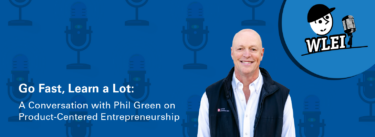Be among the first to get the latest insights from LEI’s Lean Product and Process Development (LPPD) thought leaders and practitioners. This podcast was delivered to subscribers of The Design Brief, LEI’s newsletter devoted to improving organizations’ innovation capability. This month, we explore the future of healthcare. We will feature clinicians and engineers inventing new technology and designing breakthrough pathways to more effectively treat patients.
Long waiting times for medical treatment plague users of the public healthcare system in Brazil and other countries. But waiting times are not just inconveniences. In healthcare, they introduce unnecessary complexity and risks.
In the mid-2000s, a team of doctors, nurses, pharmacists, and administrative staff decided to attack the backlog of 300 patients waiting up to 3 months for care at a public hospital’s cancer center, the largest such center in the metropolitan area. Despite having little experience in process redesign, we revamped the care process to develop new, more efficient value streams for our patients.
Finding treatment product families
Redesigning the flow of appointments was our first goal. One crucial activity was understanding what other industries call “product families,” a group of products or services that share similar processes or equipment, passing through largely the same steps. Organizing by product families is important because it streamlines workflows, reduces delays, and improves efficiency by grouping similar tasks. Within patient care, there are at least four families:
- New patients
- Patients coming for treatment
- Patients requiring urgent care
- Patients coming for follow-up visits
Within the chemotherapy treatment group, there were also several other families based on whether treatment times were (1) short, (2) mid-level, or (3) long, and (4) those getting oral drugs, such as hormones, etc. In addition, most patients in these families also needed blood tests or other exams before treatment.
So, after a few years and numerous experiments redesigning care, we integrated several internal processes that met the requirements of almost all our patients. This improvement meant that patients spent most of their time in the hospital receiving treatment, not waiting for treatment. It also cut the number of visits to the minimum needed.
To do it, we had to deeply understand our patients: where do they come from (more than half from other cities), how do they get to the hospital (by private car or public transportation), do they come alone or with a family member, do they have some special need.
Continuous flow treatment
We also had to clearly understand and make our bottlenecks work for us, not against us. Two were priorities: the triage room, which had only two beds for treatment, and the pharmacy, where two pharmacists prepared drugs in a restricted area. Our ambitious goal was for the roughly 50 patients we treated daily to have a “one-stop-shop” experience – a continuous flow of treatment with as little waiting as possible. Patients would arrive in the morning, get blood tests, see the doctor, and take their chemo. We had to balance the flow in our bottlenecks to achieve the goal by synchronizing several activities.
In the new synchronized process:
- New patients come only late in the morning and late in the afternoon because these visits are longer and reduce the physician flow of patients to chemo.
- Appointment types address the complexity and time to deliver chemo. For example, one long chemo treatment is balanced by two mid or short sessions in a mixed batch of appointments.
- Some patients arrive and go straight to chemo because they don’t have any later treatments. The pace of treating patients in the chemo treatment room is balanced by scheduling two mid-chemo treatments for each long-chemo treatment.
- Patients with short chemo treatments take a separate “fast track” flow, spending less than one hour from door to door.
- Patients follow color-coded treatment paths in the treatment room corresponding to chemo, radiotherapy, or oral drugs. To minimize waiting times, the nurses’ treatment schedule is balanced by allocating one long treatment alongside three or four mid-length or short treatments. But in the first hour of the shift, all nurses serve any patient coming in with the needed setup, like venous access, reviewing tests, educating patients, drug orders, etc. The tasks and focus for the first hour were determined during the morning daily huddle based on the anticipated demand.
- We reduced pharmacy orders to no batching. Nurses submit every drug order one by one in a FIFO sequence. Pharmacists then fulfill these orders and return them to the nurses in a FIFO sequence. Most medical practices prepare patient orders in a single batch: all drugs prescribed are in one order. Some practices used to prepare orders the day before, but this often led to huge amounts of drugs wasted for patients who are not doing well or just don’t show up.
- We developed a color-coded drug-ordering system for each nurse. Pharmacists receive a colored box with a bar code with all patient and drug information required for the day. Instead of preparing a patient’s full day of drugs (a patient may receive four to five during the day), which requires 30 minutes to prepare, the pharmacist prepares each drug as needed according to the box. This takes just four or five minutes. Thanks to this practice, up to 12 patients can begin treatment in the first hour of setup time. Later, this colored box was substituted with a patient tag printer. Pharmacists only have to fill orders according to a tag, and then the nurse reads the bar code to check it against the patient’s bar code.
To make everything work in this orchestrated flow and to help patients move without waiting through areas during their visits, we developed several supermarkets and color-coded flows for:
- Patient charts to plan needs beforehand to avoid being surprised by missing information that delays the flow. At that time, we used both paper and electronic medical records.
- Blood and other tests or exams, so when the patient arrives in the morning, these elements of the process are available, avoiding rework. At that time, electronic medical records (EMR) were not fully integrated, and we still have missing parts.
- Pre-medications are at the treatment areas, so when a patient comes from an appointment, the setup is ready.Drug vials to be prescribed that day because, inside the classified pharmacy cabin, these vials required unpacking and pre-cleaning before use in a clean environment (classified cabin type II for chemo). This one is refilled twice daily due to limited space.
- Drugs for the “fast track” chemo flow are not required to be prepared inside the classified cabin but usually come in prefilled vials ready to use.
Patients coming to appointments for oral drug administration or just picking them up are separate color-coded flows.
From 2008 to 2015, we almost tripled our patient care capacity, from 16 to 20 patients per day to 45 to 55 patients per day, by eliminating useless administrative areas. We opened 15% more treatment slots with the same dedicated team count and minimal spending. For patients coming for oral drug pickup, their door-to-door time dropped from 30 to 50 minutes to a median of 12 minutes door-to-door (95% between five and 25 minutes, none above 35 minutes). We could also provide treatment to new patients within two or three weeks, compared with the previous one to two months of waiting to access care.
Accelerate Innovation and Optimize Product Development with LEI’s LPPD Consulting and Learning Group Collaboration”
Transform your product development process with LEI’s Lean Product and Process Development (LPPD) coaching services. Our expert coaches help you design and deliver innovative products faster, reduce costs, and optimize workflows. Join the LPPD Learning Group to collaborate with leading companies, share insights, and learn from real-world experiences. Whether you’re just starting or looking to deepen your lean capabilities, LEI is here to guide your journey towards sustainable growth and competitive advantage.
Designing the Future
An Introduction to Lean Product and Process Development.






This is a great accomplishment, congratulations. Patient leadtime has been a frequent target of healthcare-related lean thinking for over 20 years. We have used cross-functional teams involved in value stream mapping with great success in improving patient lead-time and establishing flow. It’s not clear how you analyzed patient flow, this is not what I consider an LPPD-related problem to solve. Has LPPD now embraced VSM to enable flow or have you found a better way within LPPD to analyze and improve?